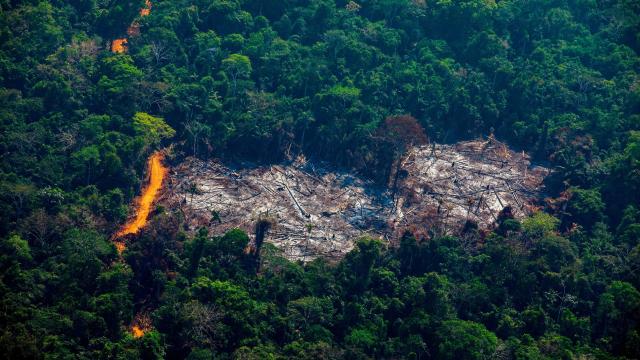Last year was certainly highest rate of deforestation in a decade last year and the number of fires lit grew by 30 per cent compared to 2018.
The official findings largely mirror research released late last year by Brazilian NGO the Climate Observatory showing the worrying spike in deforestation and fires. The new data from from INPE shows that last year saw 89,178 total fires through the Amazon. In comparison, 2018 saw 68,345 fires. 2017 was still worse than 2019 with more than 107,000 fires, but the total amount of land deforested was lower.
Nearly 8,800 square kilometres of forest was lost in the Brazilian area known as the Legal Amazon in 2019. Much of the deforestation centred on the Brazilian state of Pará, which sits at the traditional epicentre of deforestation in the Amazon.
The deforestation spike in 2019 is bad, though still below the rampant deforestation in the 1990s. But deforestation rates and the number of fires need to drop every year if we want to succeed at saving the rainforest and reducing greenhouse gas emissions, and the spike is a bad sign for the Amazon and the planet as a whole.
In its summer this year, the Amazon Rainforest underwent massive burning after Brazilian President Jair Bolsonaro took office.
The extreme right-wing Bolsonaro has been vocal about opening up the world’s largest rainforest to private interests. His administration has also taken a lax approach to enforcing environmental regulations. As a result, many of his supporters took to burning the forest to clear land for ranchers and their cattle who then eventually sell their land to soy farmers once they’re done. And Bolsonaro has shown little regard for the indigenous peoples who call the rainforest home.
The loss of this rainforest doesn’t just mean a loss of invaluable biological resources. It’s a loss of culture for many of the Amazonian tribes in the region. For the rest of us, it’s a loss of a key climate protection. The Amazon Rainforest stores carbon in the trees and soil. Setting it on fire releases that carbon into the atmosphere, contributing to the climate crisis.
At the same time, climate change has contributed to a drying trend in the Amazon, and researchers have warned that the forest may not be able to adapt fast enough to shifting conditions. And every time a tree burns, we’re one step closer to the point of no return.
